2024 Hyundai Kona Electric Review: First Drive

Bigger, with more tech and better range
Love It | Leave It |
|---|---|
More Comfortable and Spacious | Awkward Gear Shifter |
Surprisingly Good Driving Characteristics | Hard Plastic Interior Bits |
Available Tech |
The meteoric rise of the subcompact Kona SUV is one of the more intriguing stories of recent Hyundai history. Only on sale since 2018, this small crossover has become firmly entrenched as one of Hyundai’s bestsellers in North America. While it’s a top-five model in the U.S., it’s even more popular in Canada, where it has accounted for about 20 percent of the company’s business over the past five years.
With that much wind in its sales, Hyundai launched the second-generation Kona in September in gas-powered form, and now at year’s end, the all-new Kona Electric is beginning to land in dealers across the continent.
As the photos reveal, the new Kona Electric differs greatly from its predecessor on the outside, but the changes are more than skin deep as we discovered during a recent press drive. Hyundai aims to grow the EV portion of Kona sales, and to do so the company has focused on three main pillars: design, advanced tech, and practical space.
More Range, Faster Charging
On the powertrain front, the Kona Electric is powered by a permanent magnet synchronous motor that works in conjunction with a 64.8 kWh lithium-ion battery that drives the front wheels only.
This setup is unchanged from the outgoing model, but the battery capacity is up slightly from 64 to 64.8. Power output is also unchanged, with a rating of 201 horsepower and 188 lb-ft of torque.
As for other vital EV data, the new Kona Electric’s range has been improved from 258 to 261 miles (415 to 420 kilometers) and charge times have been reduced, especially when using a level two charger.
With an L2 charger, the outgoing Kona Electric’s battery would need more than nine hours (9:15, to be exact) to charge from 10 to 100 percent full. The 2024 model, on the other hand, chops three hours off that figure, needing only 6:14 to go from 10 to 100 percent charged.
DC charge times have also been cut, with the new model requiring 43 minutes to charge the battery from 10 to 80 percent full. The outgoing model took 47 minutes to achieve the same state of charge.
High Tech Exterior Looks
While Kona and Kona Electric share a common design language, there are several details that distinguish them from one another.
Up front, the Kona Electric has a different bumper and grille design than the Kona. The former has a prominent pixel design element (lots of little squares) in its lower grille area, while the latter features a more rugged bumper / grille treatment. The Kona Electric also has a charge port above its grille which includes a heated door, a new feature for 2024.
Along the sides of each car, some key differences stand out. The Kona Electric receives body color wheel arch cladding and gloss black lower trim along the bottom of the doors, while Kona has satin black wheel arch and body cladding. The Kona Electric’s wheels are also smaller at 17 inches, while those on Kona are available in sizes up to 19 inches.
Much like the front, the rear of each car differs regarding bumper design. The Kona Electric has pixel design elements, while the Kona design is more rugged. Kona models also have higher ground clearance.
Bigger Footprint = Roomier Interior
The second gen Kona is longer, wider, taller, and rides on a longer wheelbase than its predecessor, which means more interior space for passengers and cargo. Especially notable is length, which has increased by 5.7 inches (150 mm), and wheelbase, which has grown by 2.3 inches (60 mm).
An enlarged footprint has had a big impact on cargo volume, which is now 25.5 cubic feet (723 liters) with the rear seatbacks upright or 63.7 cubic feet (1,804 liters) when they are folded down. This marks a 33 percent increase over the outgoing model. Smaller gains have also been made for headroom, legroom, and shoulder room to give the Kona a more spacious feel.
More Standard and Available Tech
Like the Kona, the Kona Electric comes loaded with a long list of standard and available tech features. Among the standard highlights are twin 12.3-inch digital instrument cluster and multimedia displays, wireless Apple CarPlay and Android Auto, and proximity key with remote start.
Available features include heated front seats and heated steering wheel (both are standard in Canada), ventilated front seats, head up display, wireless smartphone charge pad, Remote Smart Parking Assist, and more. Of note, all of these are standard on the top grade in the U.S. (Limited) and Canada (Ultimate).
The Kona Electric also comes loaded with a long list of standard safety kit, including Blind Spot Collision Warning, Rear Cross-Traffic Collision Avoidance Assist, Forward Collision Avoidance Assist, Lane Keeping Assist, and more.
Grade Walk
As for grades, there are three Kona Electric models in the U.S. and two in Canada. Listed with base MSRP.
U.S.
- SE – $32,675
- SEL – $36,675
- Limited – $41,045
Canada
- Preferred – $46,399
- Ultimate – $51,199
On the Road
As is the case with other EVs, the Kona Electric offers smooth and powerful acceleration, a comfortable ride, and a whisper quiet cabin.
What stood out, however, is its light and responsive steering, and responsive handling. Our Kona Electric felt quite planted to the roads, several of which were slick with light to moderate rain. Of note, the Sport drive mode produced a noticeably sportier acceleration characteristic which made the car more engaging to drive.
Apart from its driving character, we were impressed with our tester’s big digital screens with their pin-sharp resolution and easy-to-use layout. The seats in out Limited grade tester (Ultimate in Canada), were also quite comfortable and we are impressed with the many storage bins and cubbies Hyundai has jammed into the Kona Electric’s cabin.
Less impressive is the new Hyundai gear shifter, which is mounted on the column, and features an unintuitive and awkward D-N-R arrangement with a park button stuck on the end. Hyundai is using this shifter on its IONIQ cars, and it’s sure to spread to other models, but it is no replacement for a traditional P-R-N-D-L arrangement, whether it’s located on the steering column, or – better yet – on the center console.
We also noted a high degree of hard, and rather cheap looking plastic in the Kona Electric’s cabin, which is a bit disappointing considering its price tag, especially in Canada.
The Verdict: 2024 Hyundai Kona Electric
Overall, we come away impressed with the new Kona Electric. From its high degree of standard and available equipment to its improved range and charge times, and fun-to-drive character, it seems well positioned to be a volume seller.
Bottom line, this car is better in every way than its predecessor, and while it’s not perfect, its bigger range, roomier interior, and loads of useful tech should convert a lot of shoppers seeking to move on from their gas-powered cars.
Become an AutoGuide insider. Get the latest from the automotive world first by subscribing to our newsletter here.
Fast Facts | |
|---|---|
Engine: | Single electric motor |
Output: | 201 hp, 188 lb-ft |
Transmission: | 1AT |
Fuel Economy (MPGe): | 131 city, 105 highway |
Starting Price (USD): | $32,675 |
As Tested Price (USD): | $34,010 (incl. dest.) |
Starting Price (CAD): | $46,399 |
As Tested Price (CAD): | $48,324 (incl. dest.) |

With more than 20 years of industry experience, which includes automotive retail, motorsports PR, and writing and editing for various automotive publications, Lee is an AutoGuide freelancer, and car guy to the core. For nearly a decade and a half, he has married his two consuming passions together – journalism and the automotive industry. Whether it’s providing coverage on debuts from an auto show floor, writing road test reviews, or previewing a new model coming soon, Lee is eager to share his passion for the automotive industry with his readers. He is a long-standing member of the Automobile Journalists Association of Canada (AJAC) and won a feature writing award in 2018.
More by Lee Bailie



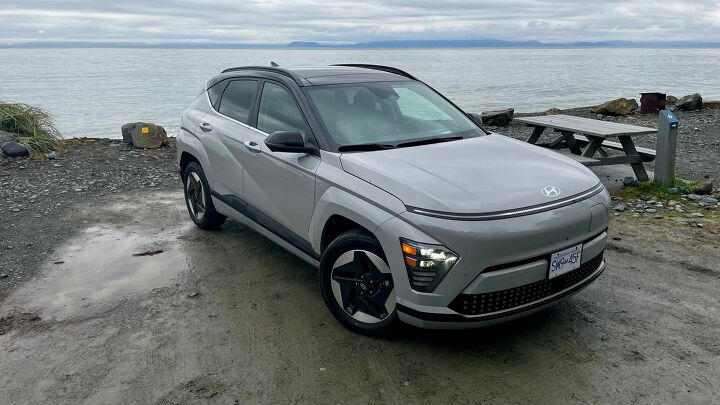

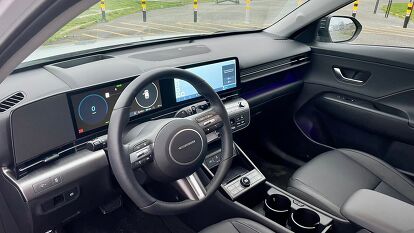











































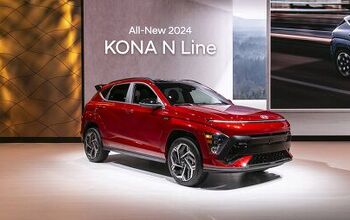
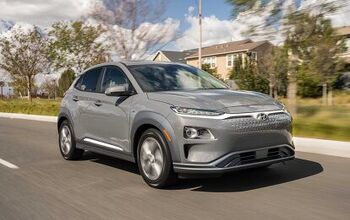

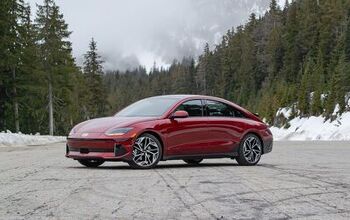
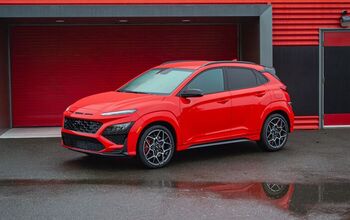

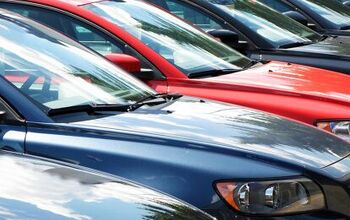



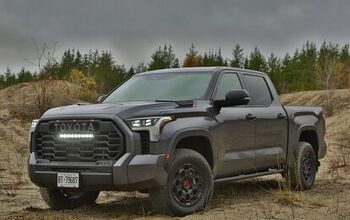
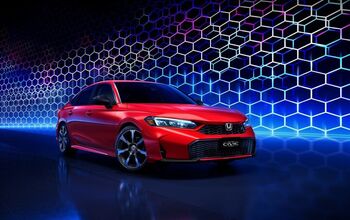



Comments
Join the conversation
Sounds decent...but $48K+taxes in Canada probably not really a volume seller. Needs AWD for $5k less. I still want to know the battery replacement price on these five years down the road...could really affect resale value. Much of Canada is not really ready for full EVs ...local use okay but a hybrid maybe a better choice.
More lumps and bulges than a blind date. Better deal would be a slightly used and Certified Ioniq 5.